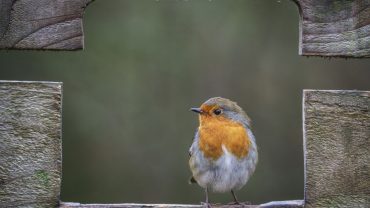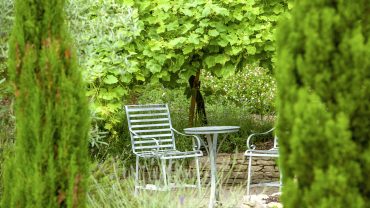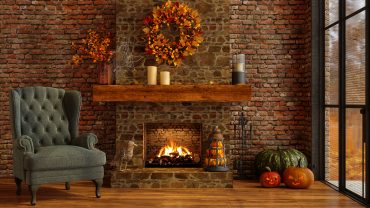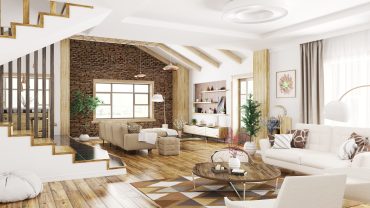When it comes to gardening inside, the only way is up. At least that seems to be the attitude behind the growing trend for indoor vertical gardens. But what exactly are they? What’s the difference between an indoor wall garden and an indoor garden tower? And why are they so popular? That’s what we’re here to find out.
So join us as we explore what happens when you bring the outside in and then turn it on its side.
About Indoor Vertical Gardens

A stunning indoor vertical garden (Credit: onurdongel via Getty Images)
An indoor vertical garden is a collection of plants planted along an upward plane or in tiers. This can be achieved using structures like panels, trellises, shelves, or even an indoor garden on a wall. And it can range from small, DIY setups to expansive installations that dominate a room.
Note that this is about the direction of planting rather than that in which an individual plant grows. So, for instance, ivy or other climbing plants in isolation wouldn’t be considered vertical for this purpose. It would require several items of greenery planted on an axis that’s not parallel to the ground.
With that in mind, let’s look at different types of indoor garden vertical arrangements.
Types of Indoor Vertical Gardens

Young plants in a hydroponic farm (Credit: Jordan Lye via Getty Images)
There’s a surprising array of different types of indoor garden towers, panels or walls available, including:
Living Walls
Living walls, also known as green walls, are installations where plants are grown on a vertical surface. They often cover an entire wall to create something between an indoor wall garden and an art installation. They require a robust support system and irrigation but offer a dramatic visual impact as an indoor garden on a wall.
Pocket Planters
Pocket planters are a type of indoor vertical garden that come in many shapes and configurations. Their defining feature is that they’re composed of separate plants in individual pockets, pods, or other containers arranged on a vertical surface. These can be fabric or felt pockets attached to a backing board or trellis, pots on a pegboard, or containers hung on a column. This option is great for herbs or small flowers and is relatively easy to install.
Stacked Planters
Stacked planters are a sort of indoor garden tower in which planters or containers are arranged one atop the other. These are often modular systems consisting of prefabricated panels or blocks that can be connected and expanded.
Hydroponic Systems
Hydroponic systems represent a modern approach to indoor vertical gardening, utilising water-based nutrient solutions instead of soil. These indoor garden towers are efficient and can yield faster plant growth.
Added Extras
From LED grow lights to smart monitoring, there are various added extras for indoor vertical gardens.
The Benefits of Going Vertical

Luxury bathroom with a vertical garden (Credit: Eoneren via Getty Images)
There are plenty of perks for changing direction when it comes to planting, including:
Saving ‘Flora’ Space
One of the most significant advantages of indoor vertical gardens is their ability to save space. In apartments or homes where floor space is at a premium, vertical gardens allow for a variety of plants without cluttering living areas.
Aesthetic Appeal
An indoor garden vertical can serve as living artwork, adding texture, colour, and life to any room. They can become a stunning focal point in the home, impressing guests and creating a serene atmosphere.
Choosing the Right Plants

A variety of herbs in a small vertical garden (Credit: Naomi Rahim via Getty Images)
Selecting the appropriate plants is crucial for the success of an indoor vertical garden. Several factors need to be considered to ensure the garden thrives.
- Light Requirements: Light requirements are critical for an indoor garden vertical in orientation, as plants need appropriate light levels to thrive. Shade-tolerant plants should be chosen for low-light areas.
- Growth Habits: Plants that grow well vertically, such as vines or trailing species, are ideal.
- Maintenance Needs: Selecting plants that match the willingness to care for them is important.
There are several popular plant choices for indoor vertical gardens.
- Pothos: Easy to grow and tolerates low light.
- Spider Plants: Great visual option with minimal care requirements.
- Ferns: Add lushness and thrive in humid environments.
- Succulents: Ideal for bright areas and require little water.
- Herbs: Basil, mint, and parsley are both decorative and useful in the kitchen.
These plants are popular choices for indoor vertical gardens due to their adaptability and aesthetic appeal.
Considerations for Indoor Vertical Gardening

The aesthetic harmony of a vertical garden in the bedroom (Credit: tulcarion via Getty Images)
Creating an indoor vertical garden involves several considerations to ensure a successful and harmonious addition to the living space.
Planning
Proper planning is essential when conceptualising an indoor vertical garden.
- Assessing the Space: The installation area should be evaluated, considering factors like light, temperature, and accessibility. Understanding the environment helps in selecting suitable plants and systems.
- Choosing a System: Deciding between DIY options or pre-made systems depends on factors such as skill level, budget, and desired complexity. Each system offers different aesthetics and functionalities.
- Selecting Plants: Plants should be chosen based on their compatibility with the selected location’s conditions, such as light and humidity levels.
Design Integration
Integrating the indoor vertical garden into the existing interior design enhances its impact.
- Aesthetic Harmony: The garden’s style should complement the room’s décor, considering colours, textures, and overall theme.
- Functional Placement: Positioning the garden where it can be easily appreciated and maintained adds to its practicality and enjoyment.
Maintenance and Care

Caring for a vertical garden (Credit: Drs Producoes via Getty Images)
Maintaining an indoor vertical garden ensures its longevity and vitality. Regular attention to certain aspects can keep the garden healthy and attractive.
Watering
Proper watering is crucial for the health of an indoor vertical garden.
- Consistency: Regular watering schedules help maintain plant health, but overwatering should be avoided to prevent root rot.
- Drainage: Ensuring excess water can drain away protects the plants from waterlogged conditions.
Lighting
Adequate lighting is necessary for plant growth in an indoor vertical garden.
- Natural Light: Placing the garden near windows allows plants to receive natural sunlight, which is beneficial for plant health.
- Supplemental Lighting: Grow lights can be utilised in areas lacking sufficient natural light, supporting plant growth.
Pruning & Monitoring
Regular maintenance activities keep the indoor vertical garden in optimal condition.
- Pruning: Trimming plants can promote healthy growth and prevent overgrowth that may overshadow other plants.
- Pest Control: Monitoring for pests and addressing issues promptly helps maintain plant health.
Challenges in Indoor Vertical Gardens

Ensure your vertical indoor garden is structurally sound (Credit: onurdongel via Getty Images)
Creating and maintaining an indoor vertical garden may present challenges, but understanding common issues can lead to effective solutions.
Drying Out
Vertical gardens can dry out faster due to gravity affecting water retention. Using moisture-retentive soil and mulching surfaces may help retain water, reducing the frequency of watering needed.
Structural Integrity
The weight of the garden can strain the wall or support structure. Employing lightweight materials and ensuring proper installation techniques can safeguard against structural issues.
Uneven Growth
Some plants may outcompete others, leading to uneven growth patterns. Grouping plants with similar growth rates and needs can help promote a balanced appearance and reduce competition for resources.
The Upshot of Indoor Vertical Gardens

A vertical indoor garden in a modern home (Credit: Vasyl Cheipesh via Getty Images)
As we’ve explored, indoor vertical gardens are seen by many as a neat and pretty way to bring the outside in without sacrificing valuable floor space. The diverse types of indoor vertical gardens, from indoor wall gardens to indoor garden towers, provide plenty of options.












